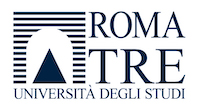Carissimi Soci SGI,
Carissimi Soci Società Associate,
Carissimi Soci Società Associate,
su indicazione del Prof. Claudio Faccenna (Univ. "Roma Tre"), vi segnaliamo il Bando per due borse di Dottorato presso l'Università degli Studi "Roma Tre" che inizieranno a partire dal 1 Gennaio 2024. La scadenza per le domande è fissata alle ore 14:00 del 27 Giugno 2023.
POSITION 1:
The Dead Sea fault and the uplift of the Negev-Jordan highlands
The aim of this project is to define the long to short term evolution of the seismogenic Dead Sea fault, using structural and morphotectonic analysis, thermochronological and geochemical data. The formation of the Dead Sea valley and the activity of the faults appear to be contemporaneous with the uplift and the volcanism of the region, but this correlation is still enigmatic.
The project will explore the analysis of the fault damage zone, the 3-D definition of the fault architecture and its kinematic history. A thermochronological transect, coupled with cosmogenic sampling and morphotectonic analysis will be performed along the rift shoulder to better constraints its space-time evolution. Analogue experiments with river incision and aggradation will be also carried out to constrain the morphotectonic evolution across- and along-strike of the Dead Sea Fault.
The goals of the PhD project are: (i) understanding the long-term evolution of the Dead Sea fault with implication for seismo-tectonics; (ii) constraining exhumation of the rift shoulder and surface topography evolution along the Dead Sea fault; and (iii) reconstructing the geodynamic evolution of the region. This study will be developed in the frame of a research project dealing with the vertical motion of the Middle East region and will be done in collaboration with several international institutions (ETH Zurich, GFZ Potsdam, Geological Survey of Israel and other local institutions).
POSITION 2:
Short-term, catchment- to orogenic-scale impact of climate forcing on sediment generation, transport, and storage
The transient storage of sediments in fluvially dominated catchments of actively deforming orogens affects mass redistribution processes and consequently tectonic deformation at different temporal (from 103 to 107 years) and spatial (from individual catchments to the entire orogen) scales. Although the short-term transient storage of sediments appears to be primarily driven by climate cycles, the factor controlling sediments generation and their delivery from the coupled hillslope-fluvial system to the sink (valleys, intermontane basins and forelands), as well as the lag time between the causes (climate forcing) and the stratigraphic effects (fluvial aggradation or incision) is still matter if debate.
In this project we propose to investigate the concentration of 10Be and 26Al in selected catchments of fluvially dominated landscapes and dated Quaternary terraces of valleys characterized by multiple sedimentary infilling cycles to: 1) quantify modern and paleo catchment-wide erosion rates, and 2) characterize episodes of sediments burial and re-exposure and hence the sediment residence time in orogenic systems, possibly spanning different climatic zones.
Results will be integrated with available data and compared with analogue modeling experiments performed with an apparatus that simulates deformation, precipitation, erosion, deposition, and fluvial incision of a double growing orogen. This multidisciplinary strategy will provide a conceptual model of general interest that will allow quantifying the impact of climate changes on sediment generation and transfer, sedimentation and incision. The expected results can be used to make predictions at different time scales including the Anthropocene.
POSITION 1:
The Dead Sea fault and the uplift of the Negev-Jordan highlands
The aim of this project is to define the long to short term evolution of the seismogenic Dead Sea fault, using structural and morphotectonic analysis, thermochronological and geochemical data. The formation of the Dead Sea valley and the activity of the faults appear to be contemporaneous with the uplift and the volcanism of the region, but this correlation is still enigmatic.
The project will explore the analysis of the fault damage zone, the 3-D definition of the fault architecture and its kinematic history. A thermochronological transect, coupled with cosmogenic sampling and morphotectonic analysis will be performed along the rift shoulder to better constraints its space-time evolution. Analogue experiments with river incision and aggradation will be also carried out to constrain the morphotectonic evolution across- and along-strike of the Dead Sea Fault.
The goals of the PhD project are: (i) understanding the long-term evolution of the Dead Sea fault with implication for seismo-tectonics; (ii) constraining exhumation of the rift shoulder and surface topography evolution along the Dead Sea fault; and (iii) reconstructing the geodynamic evolution of the region. This study will be developed in the frame of a research project dealing with the vertical motion of the Middle East region and will be done in collaboration with several international institutions (ETH Zurich, GFZ Potsdam, Geological Survey of Israel and other local institutions).
POSITION 2:
Short-term, catchment- to orogenic-scale impact of climate forcing on sediment generation, transport, and storage
The transient storage of sediments in fluvially dominated catchments of actively deforming orogens affects mass redistribution processes and consequently tectonic deformation at different temporal (from 103 to 107 years) and spatial (from individual catchments to the entire orogen) scales. Although the short-term transient storage of sediments appears to be primarily driven by climate cycles, the factor controlling sediments generation and their delivery from the coupled hillslope-fluvial system to the sink (valleys, intermontane basins and forelands), as well as the lag time between the causes (climate forcing) and the stratigraphic effects (fluvial aggradation or incision) is still matter if debate.
In this project we propose to investigate the concentration of 10Be and 26Al in selected catchments of fluvially dominated landscapes and dated Quaternary terraces of valleys characterized by multiple sedimentary infilling cycles to: 1) quantify modern and paleo catchment-wide erosion rates, and 2) characterize episodes of sediments burial and re-exposure and hence the sediment residence time in orogenic systems, possibly spanning different climatic zones.
Results will be integrated with available data and compared with analogue modeling experiments performed with an apparatus that simulates deformation, precipitation, erosion, deposition, and fluvial incision of a double growing orogen. This multidisciplinary strategy will provide a conceptual model of general interest that will allow quantifying the impact of climate changes on sediment generation and transfer, sedimentation and incision. The expected results can be used to make predictions at different time scales including the Anthropocene.
Per ulteriori informazioni sulle posizioni si rimanda alle pagine:
https://apps.uniroma3.it/public/bando2023/
https://apps.uniroma3.it/public/bando2023/ProceduraConcorsualeFront.aspx?idb=454&s=638
Per ulteriori informazioni si invita a contattare:
Position 1 - Claudio Faccenna: claudio.faccenna@uniroma3.it or claudio.faccenna@gfz-potsdam.de
Position 2 - Paolo Ballato: paolo.ballato@uniroma3.it
https://apps.uniroma3.it/public/bando2023/ProceduraConcorsualeFront.aspx?idb=454&s=638
Per ulteriori informazioni si invita a contattare:
Position 1 - Claudio Faccenna: claudio.faccenna@uniroma3.it or claudio.faccenna@gfz-potsdam.de
Position 2 - Paolo Ballato: paolo.ballato@uniroma3.it
Cordiali saluti,
La Segreteria







